How To Repair Ground Erosion Around A Dead Tree Stump
6 Common Lawn Problems and Solutions
Real world situations and expert advice and solutions.
1 / 6
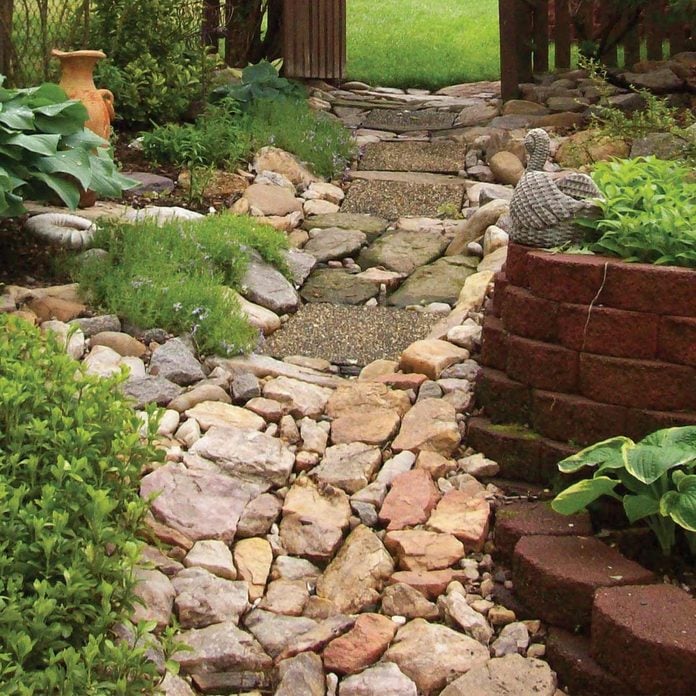 Family Handyman
Family Handyman
An Eroding Slope
Problem: "Our beautiful backyard slope was washing down onto our patio with every rain. It was only a matter of time before the whole hill came tumbling down."
Reader Solution: "We built a dry creek bed on the slope, and it fills dramatically during a rainstorm. It's a beautiful addition to our landscape, and it seems to be solving our erosion problem." Carolyn Rogers
Expert Input
"A dry creek bed can work well to control erosion," says landscape architect Susan Jacobson, "if there's a place for the water to go such as a sandy area somewhere else on your property." In its simplest form, a dry creek bed is simply a gully or trough filled with rocks that directs the flow of water to prevent erosion. To control larger volumes of water, pin landscape fabric in the gully and mortar the rocks into place. Constructing the creek bed with rocks of several different sizes gives it a natural look and maximizes its water-carrying abilities. Also, check out these cheap landscaping updates that make a splash.
But Jacobson says building a dry creek bed won't work in every situation. "You'll create a bigger problem (and a potentially illegal situation) if you direct the water into the street or into your neighbor's yard. And if the slope is too steep, you might just end up with the rocks tumbling down the hill as well."
To control erosion on a steep slope or when there's no reasonable place for the water to flow, consider these suggestions:
- Terrace the slope with boulders, stone retaining walls or landscape timbers to gradually flatten the incline and slow drainage.
- Use layered plantings of deep- and shallow-rooted trees, shrubs and ground covers to prevent water runoff.
- Don't use plastic, straw, mulch, grass or shallow-rooted ground covers alone to control erosion on a slope because they won't be stable over the long term.
2 / 6
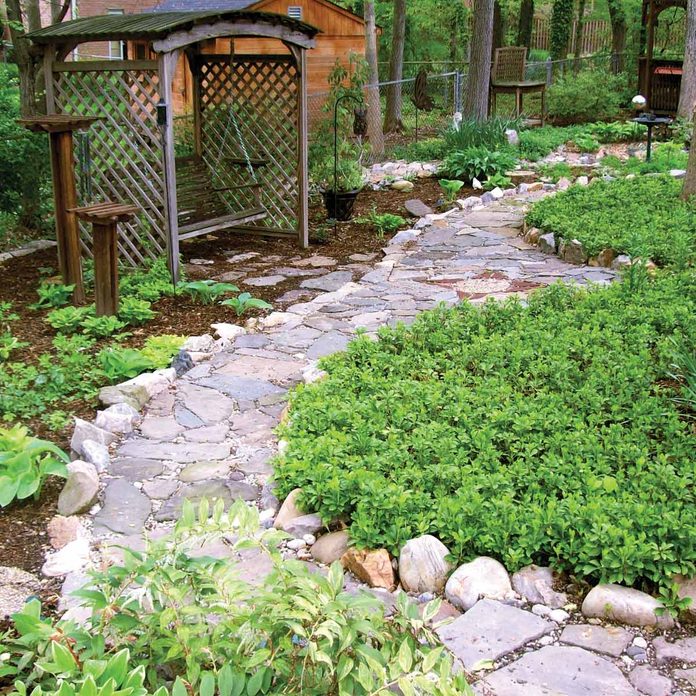 Family Handyman
Family Handyman
Heavy Shade Kills Grass
Problem: "My wife wanted grass, so I tried to grow it many times over the years. But thanks to the heavy shade cast by our oak trees, by mid-summer our backyard consisted of small, lonely tufts of grass surrounded by bare earth."
Reader Solution: "My solution was to till most of the backyard (when my wife was gone for the day) and create a shade garden. Now that poor, sad grass is just a dim memory, and so far, the garden looks great." Bob Rogers
Expert Input
A shade garden can be a beautiful way to deal with mature trees. However, planting a garden at the base of a tree can be challenging for both the plants and the tree. Shade isn't the only issue: "The plants will also need to cope with dry soil and root competition," says Doris Taylor, a plant information specialist at the Morton Arboretum near Chicago. "And many trees are sensitive to having their roots disturbed." Taylor offers these suggestions for planting a successful shade garden without harming trees:
- Consult online resources and the local extension service to choose drought- and shade-tolerant plants for your zone.
- Newly established plants of any kind (even drought-tolerant plants) need supplemental water the first year. If the tree hates having its feet (roots) consistently wet, spot-water your new plants.
- Most tree roots are in the top 12 to 18 in. of soil and extend past the canopy. Don't cover existing tree roots with more than 1 in. of soil or they can suffocate. Tilling near a tree can destroy the fine root hairs that take up water. Instead, plant in the pockets of soil between larger roots and add slow-release organic compost to the individual planting holes.
- Don't plant closer than 12 in. from the trunk, and plant shallow-rooted perennials that don't require frequent division such as hostas, liriope and sedum.
- Shallow-rooted species like oaks, lindens, magnolias and many maples are sensitive to disturbance and can be easily damaged. Consider adding a bench or planters instead of a shade garden.
Check out these other tips to help grow grass in the shade.
3 / 6
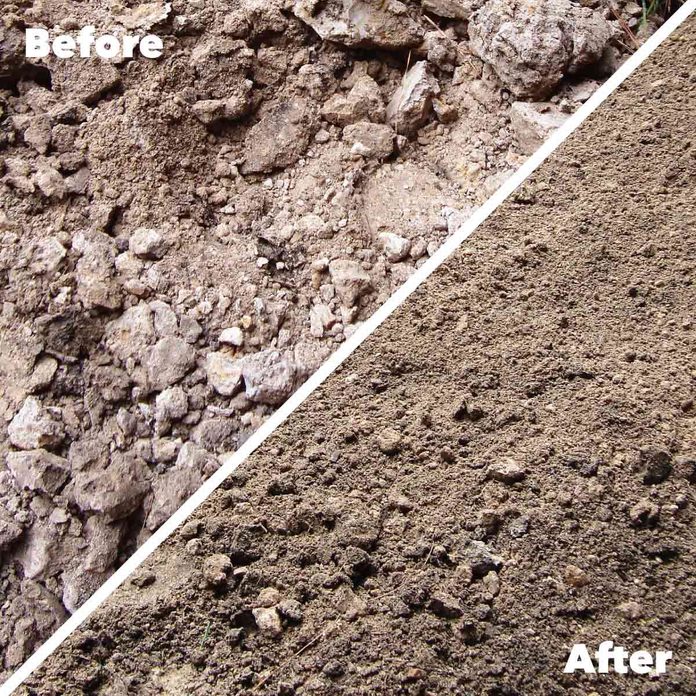 Family Handyman
Family Handyman
"Gumbo" Soil Won't Drain
Problem: "Our clay soil is mush when wet and like concrete when dry, and nothing will grow in it."
Reader Solution: "We're in the process of amending our soil with expanded shale. It's a gravel-size rock that's pumped full of air. It aerates heavy clay soil, which makes it easier to work and helps it drain better. I've already noticed that the part of the garden we've done drained much better than the rest of the garden during the last rain." Sue Blackburn
Expert Input
Sue has definitely done her research. According to Steve George, a horticulturist at the Texas Cooperative Extension service, your clay soil can benefit from expanded shale if it's heavy and sticky when wet "and gets deep cracks when it's dry in the summer." Plants don't grow well in clay soil because they don't get enough oxygen. Expanded shale creates cavities in the soil to hold both air and water. George recommends adding 3 in. of 1/4-in. to 3/8-in. shale, along with 3 in. of compost and tilling them into your soil 6 to 8 in. deep. Then cover your garden bed with a 3-in. layer of mulch. Plus: These are our favorite landscaping tips for all house styles.
The good news about expanded shale is that unlike other amendments such as compost or fertilizer, you only need to add the shale to your garden beds once. After that, you'll never need to add compost or commercial fertilizer again. The bad news is that expanded shale costs more than compost (about $10 for a 40-lb. bag; slightly less if you buy it in bulk). But according to George, it's worth it. "Using expanded shale is just so much better. It makes it fun to garden in clay."
4 / 6
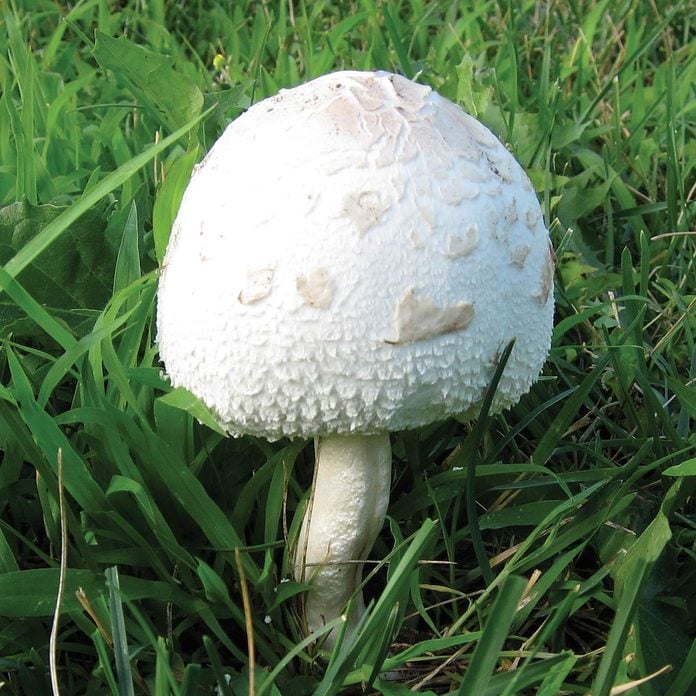 Family Handyman
Family Handyman
Multiplying Mushrooms
Problem: "We have so many mushrooms in our lawn that they make the weeds seem easy to control. We must have six different kinds, and they're worst after it rains. We've got a dog and grandkids, and those mushrooms are not only disgusting, but I'm worried someone's going to eat one."
Reader Solution: Elusive. "We've tried using fungicides, but they're expensive, they require twice-weekly applications and you need to treat every single mushroom. If you miss even one application, the mushrooms come back and you need to start over again. We're not sure what to do." Eric Lucas
Expert Input
We have good news and bad news for you, Eric. The good news, according to University of Minnesota turf expert Bob Mugaas, is that while mushrooms can look unsightly (and they're worse in years with a lot of rain), they're actually beneficial to your lawn. "They're part of the breakdown of organic material in the soil, and they help recycle nutrients."
The bad news, as you've already discovered, is that mushrooms are nearly impossible to get rid of. They're actually the fruit of an extensive underground root system. So even if you remove the visible mushrooms or use fungicides, the source of them is still there (they're like the tip of an iceberg).
According to Mugaas, you have several options. "You can certainly pull them." This won't permanently rid your lawn of mushrooms, but it can give you temporary relief.
You can also make your lawn less hospitable to fungi by correcting drainage problems and eliminating decaying organic matter. Grind down stumps, rake up grass clippings, dig up buried lumber, aerate, dethatch and replace old mulch.
The easiest option (or maybe the hardest for you, Eric) is to make peace with your mushrooms. Their numbers will increase and decrease depending on the season. Teach your grandchildren never to eat mushrooms from the lawn, and during cool, wet periods, keep a close eye on your pets.
5 / 6
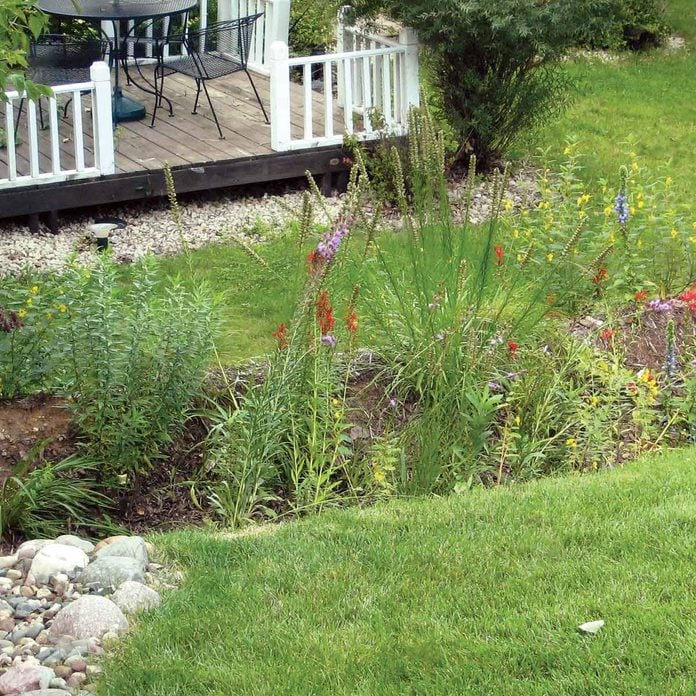 Photo courtesy of EnergyScapes
Photo courtesy of EnergyScapes
Seasonal Swamp
Problem: "I have a low spot in my yard that fills with runoff from our downspouts during rainstorms. It's not a constant problem, but it's a bear to grow grass there."
Reader Solution: None yet. Help! Alena Gust
Expert Input
Alena, if you have workable soil (not clay), a rain garden is an easy and effective solution for a short-term, isolated drainage problem. "Building a rain garden means you don't have to fight a losing battle to grow turf," says Douglas Owens-Pike, plant ecologist and owner of EnergyScapes, a Minneapolis landscape design firm. "It's also a great way to treat rainfall as a resource rather than a problem."
All you need is a shallow depression (which it sounds like you already have) that has the soil amended so it drains quickly. Make sure your rain garden is located at least 10 ft. from your foundation so you won't have any seepage problems in your basement. Plant it with shrubs and perennials that tolerate pooling water as well as periods of drought (type "rain garden" into your online browser and you'll find tons of plant lists). The amended soil and water-loving plants capture the excess water, and it slowly percolates into the earth instead of running into the storm sewer or sitting on the surface of your lawn.
And according to Owens-Pike, rain gardens aren't limited to flowers or areas with full sun. "Partially shaded areas planted with lower-growing trees and shrubs can create wonderful wildlife habitat rain gardens that become perfect nesting areas for birds." (For detailed instructions for building a rain garden, type "rain garden." in the search box above.) Next, check out 14 small-space landscaping ideas you can DIY.
6 / 6
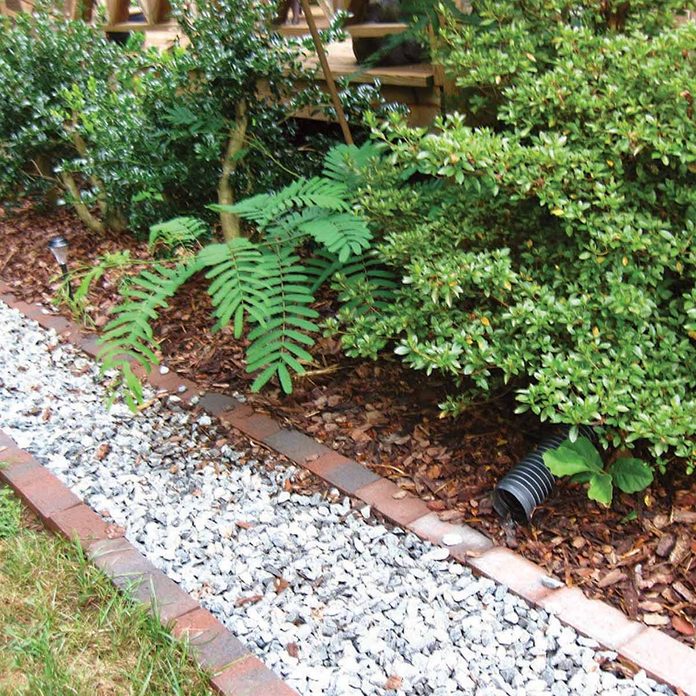 Family Handyman
Family Handyman
Boggy backyard
Problem: "Our house is at the bottom of a slope, and every time we had a hard rain, everything became a muddy mess. We got water in the crawl space and in the basement. We couldn't grow anything since it all just got washed away…our backyard was like a wasteland."
Reader Solution: "We built a French drain gravel walkway lined by decorative brick. The digging wasn't easy on my husband and stepsons, but during the first hard rain after we installed it, we all got our slickers on and went outside. There was nothing more beautiful than all that water gushing out the end of the drainpipe, and not a drop of it went into our crawl space or basement. We have a lawn and a garden now—and a beautiful gravel path." Nora Spencer
Expert Input
"This is a creative solution for controlling a lot of water invisibly," says landscape architect Susan Jacobson. A French drain is similar to a dry creek bed, except the water flows underground through a drainpipe enclosed in a gravel-filled trench. It's effective because water flows through gravel much more quickly than through soil. The water migrates into the trench and flows out of a drain at its end point. The net effect, says Jacobson, is that your lot dries out. "Again, this solution works well if you have a place to dump the water safely such as a sandy area or a side yard that slopes away from your foundation."
If you don't have a place for the water to go, she suggests creating a small holding pond that actually takes advantage of the excess water. "The idea," says Jacobson, "is to work with the natural features of your yard rather than against them." If building a pond isn't an option, an alternative is to build a dry well. This is essentially a holding tank for large water runoff that slowly drains itself into the surrounding soil. (For step-by-step instructions for building a dry well, search for "yard drainage.")
Do you have water in your basement? Here's how to fix it.
Originally Published: March 21, 2019
How To Repair Ground Erosion Around A Dead Tree Stump
Source: https://www.familyhandyman.com/list/6-common-lawn-problems-and-how-to-fix-them/
Posted by: collinswhichosedn.blogspot.com

0 Response to "How To Repair Ground Erosion Around A Dead Tree Stump"
Post a Comment